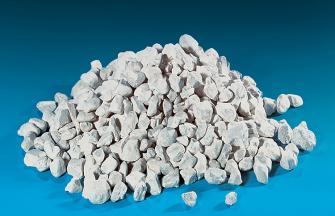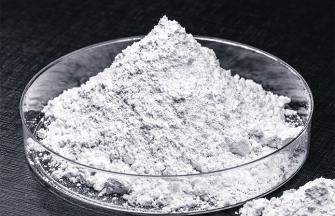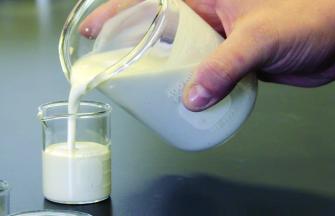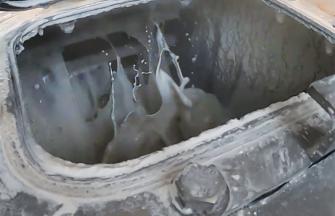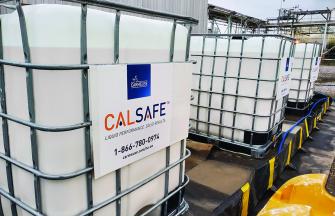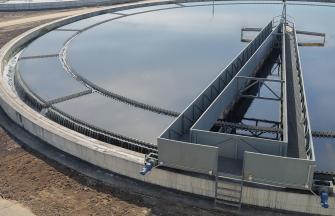
How to choose the right lime product for your water/wastewater treatment plant
When it comes to deciding on a lime product for water and wastewater treatment, you have three basic choices. There is quicklime and hydrated lime – both of which are dry bulk products. And then there are ready-made lime slurries, such as CALSAFE from Carmeuse.
So, how do you decide what lime is the right lime for you? Here is what you need to know.
The three forms of lime
Whatever the final form, all three lime products start life as limestone. After being quarried and crushed, the limestone (CaCO3) is heated in a kiln to drive off carbon dioxide – a process known as calcination. This leaves quicklime, or calcium oxide (CaO), a material that has been used by humans throughout history.
Adding water to the quicklime will result in an exothermic reaction and the production of hydrated lime, or calcium hydroxide (Ca(OH)2), a fine dry white powder not dissimilar to baby powder. Adding more water to quicklime will produce a slurry. Known as slaking, this process creates a suspension of Ca(OH)2 particles in water.
The difference between the three forms of lime is therefore really a question of how many processing steps there are from that original limestone. Quicklime is the first step away; hydrated lime, a further processing step on; ready-to-ship slurries, such as CALSAFE, yet another step further.
Keep this in mind as we discuss what to consider when deciding between the three forms of lime. Also, remember that, whatever form of lime you buy, it is almost always added to the water/wastewater treatment process as a slurry.
Deciding between lime products: the key points
Let’s start with the economics. There is a simple (and predictable) correlation here: with each processing step, the cost of the product increases. Quicklime is therefore the cheapest of the three, followed by hydrated lime. Ready-made lime slurries the most expensive.
Quicklime also ships in larger consignments of approximately 26 tons, compared to 20 tons for hydrated lime and 8.5 tons of dry lime equivalent per shipment of CALSAFE. As a result, shipping costs per ton of quicklime are lower than the shipping costs per ton of hydrated lime or per ton of dry lime equivalent in slurry.
That all seems pretty clear cut. But it is not quite so simple.
Quicklime may be the cheapest of the three products, but it requires the highest initial capital investment in equipment and the highest ongoing expenditure in terms of maintenance and labor. Why? Because you are going to need to make up the process steps between quicklime and slurry on site (remembering that lime is almost always added to water/wastewater treatment processes as a slurry).
This will require investment in a slaker to safely control the exothermic reaction that results when you add water to quicklime. You will also need a dry bulk silo and feed system to store and transport the quicklime as well as a mix tank in which to store the slurry and prevent the lime settling out of suspension.
All of this equipment will need to be safely and efficiently operated and maintained, increasing labor costs and the skills required of your personnel. It will also require some form of control system to control material flow and make sure there is always slurry in the tank when you need it. This could be a relatively simple system or one that is fully automated. Either way adds another layer of complexity.
Additionally, slaking quicklime generates grit. Grit is residual particles of uncalcined limestone and other impurities present in quicklime after calcination. Most slaker designs will include a de-gritting system for their removal. But grit is a waste product that must be effectively managed and disposed of.
Use hydrated lime and you remove the need for a slaker. You will still need a dry bulk silo and feed system to store and transport the hydrate to the mix tank as well as a control system to regulate the flow of material. Removing the slaker, however, significantly simplifies the process and reduces capital expenditure, maintenance needs, and safety risks.
Easiest to use are ready-mixed lime slurries, such as CALSAFE. You no longer need to handle any dry bulk materials or deal with the challenges that this brings (such as dusting). The only thing you need is a mix tank and you are ready to go. As a result, you reduce maintenance requirements, simplify operations and reduce the risk of injury. You also minimize the loss of lime that typically occurs during the handling of dry lime. In the long run, you avoid expensive capital investment associated with equipment renovation.
So, what lime is right for me?
As a rule of thumb, the higher capital costs and more complex operational considerations of quicklime and hydrated lime mean that ready-made lime slurries are often the most economical option for small-scale users of lime (<500 tons per year of CaO equivalent).
Medium-scale users (500-3000 tons per year) are going to see relatively short payback periods when using hydrated lime, while for large-scale users (>3000 tons per year), it is going to make most economic sense to invest in the slaking equipment required to use quicklime.
But this is only a rough guide. Ultimately, it is going to depend on your exact process and business requirements. For example, processes that are sensitive to the amount of water added may benefit from CALSAFE ready-made slurry, as the very high percentage of solids (40%) we can achieve in CALSAFE effectively reduces the amount of water added to the process per ton of active Ca(OH)2.
How can we help you?
As a producer of all three forms of lime—as well as the equipment needed to handle them via our subsidiary Carmeuse Systems — our teams are ideally positioned to advise you on what lime is the right lime for you. We can also help if you are deciding between lime products and other alkali chemicals, such as caustic soda.
Whether by testing at our state-of-the-art chemical and physical laboratory or through trials of our products at your site, we are here to support you. Based out of our Innovation Center in Pittsburgh, Pennsylvania, our specialists have over 160 years of combined industry experience and are driven by a desire to help you fully realize the benefits of our products.
For questions about equipment, the experts at Carmeuse Systems are here to support you to make the best decision for your operation. Each of our system designs includes full engineering documentation, secure equipment shipment, start-up support, and commissioning. We also offer aftermarket support and maintenance for both Carmeuse Systems and thirdparty equipment to keep your process running safely, reliably, and efficiently.
World-leading expertise. Full solution provider. Your reliable partner. When you choose Carmeuse, you can feel confident you have made the right choice. Our extensive network of production facilities means there will always be product available to meet your needs.
So, when you are next asking what lime product would best fit your application needs, let’s talk.
Call 866-780-0974. Please click here to download the article.

